#cult of aten
Text

All hail Nefertiti, who turned her back on the old gods!𓆸
☀️
#history#nefertiti#ancient egypt#queen#amarna period#womens history#cult of aten#kemetic#akhenaton#historical figures#femininity#soft girl#ancient egyptian history#royalty#girl power#akhenaten#kemetism#divine feminine#girl boss#baddie#art#ancient history#egyptology#female rulers#nickys facts
17 notes
·
View notes
Text

“An illustrated cultural guide to the archaeological site of Amarna, the best-preserved pharaonic city in Egypt.
Around three thousand years ago, the pharaoh Akhenaten turned his back on Amun, and most of the great gods of Egypt. Abandoning Thebes, he quickly built a grand new city in Middle Egypt, Akhetaten―Horizon of the Aten―devoted exclusively to the sun god Aten.
Huge open-air temples served the cult of Aten, while palaces were decorated with painted pavements and inlaid wall reliefs. Akhenaten created a new royal burial ground deep in a desert valley, and his officials built elaborate tombs decorated with scenes of the king and his city.
As thousands of people moved to Akhetaten, it became the most important city in Egypt. But it was not to last. Akhenaten’s death brought the abandonment of his city and an end to one of the most startling episodes in Egyptian history.
Today, Akhetaten is known as Amarna, a sprawling archaeological site in the province of Minya, halfway between Cairo and Luxor. With its beautifully decorated tombs and vast mud-brick ruins, it is the best-preserved pharaonic city in Egypt.
This informed and richly illustrated guidebook brings the ancient city of Akhetaten alive with a keen insider’s eye, drawing on ongoing archaeological research and the knowledge and insight of Amarna’s modern-day communities and caretakers to explain key monuments and events, while offering invaluable practical advice for visiting the site.
With over 150 illustrations, maps, and plans, Amarna is both an ideal introduction for visitors to Amarna and a window onto the extraordinary reign of Akhenaten.”
— Amarna: A Guide to the Ancient City of Akhetaten (aff), by Anna Stevens
122 notes
·
View notes
Text

Aton, also spelled Aten, in ancient Egyptian religion, a sun god, depicted as the solar disk emitting rays terminating in human hands.
Aten/Aton
Talon Abraxas
THE CULT OF ATEN, THE GOD AND DISK OF THE SUN, ITS ORIGIN, DEVELOPMENT AND DECLINE.
Amongst all the mass of the religious literature of Ancient Egypt, there is no document that may be considered to contain a reasoned and connected account of the ideas and beliefs which the Egyptians associated with the god Aten. The causes of his rise into favour towards the close of the XVIIIth dynasty can be surmised, and the principal dogmas which the founder of his cult and his followers promulgated are discoverable in the Hymns that are found on the walls of the rock-hewn tombs of Tall al-'Amarnah; but the true history of the rise, development and fall of the cult can never be completely known. The word aten or athen is a very old word for the "disk" or "face of the sun," and Atenism was beyond doubt an old form of worship of the sun. But there were many forms of sun-worship older than the cult of Aten, and several solar gods were worshipped in Egypt many. many centuries before Aten was regarded as a special form of the great solar god at all. One of the oldest forms of the Sun-god worshipped in Egypt was HER (Horus), who in the earliest times seems to have represented the "height" or "face" of heaven by day. He was symbolized by the sparrowhawk, the right eye of the bird representing the sun and his left the moon.
26 notes
·
View notes
Text
akhenaten, heretic pharaoh of egypt (asteroid 326290)

Akhenaten (sometimes referred to as Ikhnaton and/or Khuenaten) was a pharaoh of Egypt - his name translates to "successful" or "great use to" the god Aten (sometimes written as Aton). As we have discussed in his wife's post, the two were involved in the cult of Aten. He was remarked as the "heretic king" who abolished traditional religious rites and monotheistic in Egypt at the time. One of his biggest plans was to have an entire city built completely dedicated to worshipping Aten - Amarna. This plan was enacted as many open-air temples built from limestone were erected. This new belief system notably weakened the economy of Egypt at the time. The end of his reign is rather murky sadly. It is unclear if he passed from a genetic disorder (he is depicted with an elongated head); some believe he had Marfan's or Froelich's Syndrome, others believe the depiction of his head was artistic preference. It was rather shortly after Akhenaten's death that the religious cult and Amarna was abandoned completely. IN MY OPINION Akhenaten in your chart can represent a) where you experience cult like obsession, b) where your beliefs do not align with the majority of those around you, c) where your obsession results in other areas of your life falling apart (aspects will tell you where/which), and/or d) where the results of your time in power are quickly taken apart when you are no longer in charge.

i encourage you to look into the aspects of akhenaten along with the sign, degree, and house placement. for the more advanced astrologers, take a look at the persona chart of akhenaten AND/OR add the other characters involved to see how they support or impede akhenaten!
OTHER RELATED ASTEROIDS: nefertiti (3199) and aten (2062)!
like what you read? leave a tip and state what post it is for! please use my “suggest a post topic” button if you want to see a specific post or mythical asteroid next!
click here for the masterlist
click here for more egyptian myths & legends
want a personal reading? click here to check out my reading options and prices!
#astrology#astro chart#astro community#asteroid astrology#astro placements#asteroid#natal chart#persona chart#egyptian history#egyptian mythology#akhenaten#asteroid326290#nefertiti#asteroid3199
78 notes
·
View notes
Text
my latin teacher saw me draw a very aggressive sun disk (of aten) and his immediate response was to recommend me a liminal analog horror series, not before grimacing at the cult-like behavior in front of him
#just two autistic people#he knows me so well#i love his class#aten#ancient egypt#welcome to night vale#night vale
7 notes
·
View notes
Note
Hi! Were any temples/anything really built during Tutankhamun’s reign? Thank u!
If you mean 'did he build anything like the temple of Karnak?' then, no not really. He wasn't around long enough for that. To be fair most kings didn't build new temples except their Mortuary temples for their cult after death. What they did do, was add to existing temples, and Tutankhamun was no different.
Roughly three years into his reign the worship of the Aten stopped, and Amun was restored as the chief god of the Pantheon. Work was then commissioned new additions to the temple of Amun at Karnak. One of these additions was the Avenue of Sphinxes leading to the Temple of Mut, and yes it is the Avenue of Sphinxes everyone has heard of, though many of the Sphinxes date to after Tutankhamun's time. At Luxor temple, he restored the Amenhotep III hypostyle hall, and had images of Amun, which Akhenaten had destroyed, restored to their original form. This allowed festivals such as the Ipet/Opet festival, a festival dedicated to the Theban Triad of Amun, Mut, and Khonsu, to be held again.
We have to remember that during the time that most of these building projects were commissioned, Tutankhamun was only 12 years old, and wasn't making those decisions. 99% of his building projects were for the restoration of Amun, and this is mostly the re-solidifying of power for the ousted High Priests of Amun and various top nobles (most notably Tutankhamun's successor Ay). Their temples were closed by Akhenaten, mostly because the Priesthood had gained so much power they were using it to threaten the power of the King. Akhenaten, and several kings before him, had attempted to shift the Chief Deity of the Pantheon towards the Aten. This isn't an unusual thing to happen in Egyptian history, as Egypt had several chief deities over the course of it's history (Neith, Osiris etc) and one of the reasons we don't refer to Akhenaten as a heretic. The changing of religion wasn't the issue, it was the sudden shuttering, rather than slow phasing out, of the most powerful Priesthood in the country that got him erased from history. But I digress.
There was one other building known as pr n nb-xprw-ra-mry-imn HqA-wAs.t or Temple-of-Nebkheperure-Beloved-of-Amun-Who-Puts-Thebes-in-Order. This building no longer exists, and it took a while to prove it existed in the first place. It used talatat blocks from Akhenaten's own monuments as infill in its construction. However, the building itself was torn down and used as infill for Horemheb's monuments.
In fact, pretty much all of Tutankhamun's monuments or building projects were either torn down due to being unfinished or usurped by his immediate successors as the High Priests of Amun sought to wipe any trace of those who had wronged them from history.
42 notes
·
View notes
Text






Aten
Other names:Aton, Atonu, or Itn
Major cult center:Amarna
Symbol:Sun disk and reaching rays of light.
Domain:Sky and sun
Aten also Aton, Atonu, or Itn was the focus of Atenism, the religious system established in ancient Egypt by the Eighteenth Dynasty pharaoh Akhenaten. The Aten was the disc of the sun and originally an aspect of Ra, the sun god in traditional ancient Egyptian religion. Akhenaten, however, made it the sole focus of official worship during his reign. In his poem "Great Hymn to the Aten", Akhenaten praises Aten as the creator, giver of life, and nurturing spirit of the world. Aten does not have a creation myth or family but is mentioned in the Book of the Dead. The worship of Aten was initially dismantled by Tutankhamun and later eradicated by Tutankhamun's former military general Horemheb.
The cult-centre of Aten was at the new city Akhetaten; some other cult cities include Thebes and Heliopolis. The principles of Aten's cult were recorded on the rock walls of tombs of Amarna. Significantly different from other ancient Egyptian temples, temples of Aten were open-roofed to allow the rays of the sun. Doorways had broken lintels and raised thresholds. No statues of Aten were allowed; those were seen as idolatry.However, these were typically replaced by functionally equivalent representations of Akhenaten and his family venerating the Aten and receiving the ankh (breath of life) from him. Priests had less to do since offerings (fruits, flowers, cakes) were limited, and oracles were not needed.
Worship
In the worship of the Aten, the daily service of purification, anointment and clothing of the divine image was not performed. Incense was burnt several times a day. Hymns sung to Aten were accompanied by harp-music. Aten's ceremonies in Akhetaten involved giving offerings to Aten with a swipe of the royal scepter. Instead of barque-processions, the royal family rode in a chariot on festival days. Elite women were known to worship the Aten in sun-shade temples in Akhetaten.
Religion
The solar Aten was extensively worshipped as a god in the reign of Amenhotep III when it was depicted as a falcon-headed man much like Ra. In the reign of Amenhotep III's successor, Amenhotep IV, the Aten became the central god of the Egyptian state religion, and Amenhotep IV changed his name to Akhenaten to reflect his close link with the new supreme deity.
The principles of Aten's religion were recorded on the rock tomb walls of Akhetaten. In the religion of Aten (Atenism), night is a time to fear. Work is done best when the sun, Aten, is present. Aten cares for every creature, and created a Nile river in the sky (rain) for the Syrians.Aten created all countries and people. The rays of the sun disk only holds out life to the royal family; everyone else receives life from Akhenaten and Nefertiti in exchange for loyalty to Aten. Aten is depicted caring for the people through Akhenaten by Aten's hands extending towards the royalty, giving them ankhs representing life being given to humanity through both Aten and Akhenaten. In Akhenaten's Hymn to Aten, a love for humanity and the Earth is depicted in Aten's mannerisms:
Aten bends low, near the earth, to watch over his creation; he takes his place in the sky for the same purpose; he wearies himself in the service of the creatures; he shines for them all; he gives them sun and sends them rain. The unborn child and the baby chick are cared for; and Akhenaten asks his divine father to 'lift up' the creatures for his sake so that they might aspire to the condition of perfection of his father, Aten
Akhenaten represented himself not as a god, but as a son of Aten, shifting the previous methods of pharaohs claiming to be the embodiment of Horus. Akhenaten positioned himself as the only intermediary who could speak to Aten. This contributes to the belief that Atenism should be considered a monotheistic religion where "the living Aten beside whom there is no other; he was the sole god".
There is only one known instance of the Aten talking, "said by the 'Living Aten': my rays illuminate…"
Aten is an evolution of the idea of a sun-god in Egyptian mythology, deriving a lot of his concepts of power and representation from the earlier god Ra but building on top of the power Ra represents. Aten carried absolute power in the universe, representing the life-giving force of light to the world as well as merging with the concept and goddess Ma'at to develop further responsibilities for Aten beyond the power of light itself.
Iconography
Aten, by nature, was everywhere and intangible because he was the sunlight and energy in the world. Therefore, he did not have physical representations that other Egyptian gods had; he was represented by the sun disc and reaching rays of light. The explanation as to why Aten could not be fully represented was that Aten was beyond creation. Thus the scenes of gods carved in stone previously depicted animals and human forms, now showed Aten as an orb above with life-giving rays stretching toward the royal figure. This power transcended human or animal form.
Later, iconoclasm was enforced, and even sun disc depictions of Aten were prohibited in an edict issued by Akhenaten. In the edict, he stipulated that Aten's name was to be spelt phonetically.
──────⊰In Workings⊱──────
Ideas for honoring or working with/worshipping Aten
*Please know basic protections and energy work before attempting any deity work.*
*It is important to note that everyone's experiences are different and will work with spirits for different reasons. Some people may like a spirit while others will not and that's okay. Ask these spirits what they will work with you on as well as ask them if they can help you with whatever it is you need.*
Aten representing the sun itself. Giving life to all things and providing for nature. Appreciation for the light Aten gives.
During Amenhotep-Akhenatens reign using any form of statue was seen as idolatry. So it's entirely up to you if you find it appropriate or not to have one for Aten. It may be appropriate to do outdoor offerings since Aten is the sun itself.
Altar
Make alter outside or under a window or skylight.Burn Inscence.
⬩Altar cloth (maybe one of the sun)
⬩Chalice or cup
⬩Offering bowl
⬩Yellow or white candles (you can use any color)
⬩Incense and incense burner
⬩No statues were used but that's up to you
For more information on basic deity work and altar setups check out the deity work post.
Basic offerings:Bread, Cakes, Flowers, Frankincense, Fruits, Myrrh, Water
Rituals
Say or sing Atens hymn and play harp music. Use a wand or sceptre and wave it in front of the sun.
⬩Honoring the sun
⬩Summer solstice
Great Hymn to the Aten
Thou appearest beautifully on the horizon of heaven,
Thou living Aton, the beginning of life!
When thou art risen on the eastern horizon,
Thou hast filled every land with thy beauty.
Thou art gracious, great, glistening, and high over every land;
Thy rays encompass the lands to the limit of all that thou hast made:
As thou art Re, thou reachest to the end of them;
(Thou) subduest them (for) thy beloved son.
Though thou art far away, thy rays are on earth;
Though thou art in their faces, no one knows thy going.
When thou settest in the western horizon,
The land is in darkness, in the manner of death.
They sleep in a room, with heads wrapped up,
Nor sees one eye the other.
All their goods which are under their heads might be stolen,
(But) they would not perceive (it).
Every lion is come forth from his den;
All creeping things, they sting.
Darkness is a shroud, and the earth is in stillness,
For he who made them rests in his horizon.
At daybreak, when thou arisest on the horizon,
When thou shinest as the Aton by day,
Thou drivest away the darkness and givest thy rays.
The Two Lands are in festivity every day,
Awake and standing upon (their) feet,
For thou hast raised them up.
Washing their bodies, taking (their) clothing,
Their arms are (raised) in praise at thy appearance.
All the world, they do their work.
All beasts are content with their pasturage;
Trees and plants are flourishing.
The birds which fly from their nests,
Their wings are (stretched out) in praise to thy ka.
All beasts spring upon (their) feeet.
Whatever flies and alights,
They live when thou hast risen (for) them.
The ships are sailing north and south as well,
For every way is open at thy appearance.
The fish in the river dart before thy face;
Thy rays are in the midst of the great green sea.
Creator of seed in women,
Thou who makest fluid into man,
Who maintainest the son in the womb of his mother,
Who soothest him with that which stills his weeping,
Thou nurse (even) in the womb,
Who givest breath to sustain all that he has made!
When he descends from the womb to breathe
On the day when he is born,
Thou openest his mouth completely,
Thou suppliest his necessities.
When the chick in the egg speaks within the shell,
Thou givest him breath within it to maintain him.
When thou hast made him his fulfillment within the egg, to break it,
He comes forth from the egg to speak at his completed (time);
He walks upon his legs when he comes forth from it.
How manifold it is, what thou hast made!
They are hidden from the face (of man).
O sole god, like whom there is no other!
Thou didst create the world according to thy desire,
Whilst thou wert alone: All men, cattle, and wild beasts,
Whatever is on earth, going upon (its) feet,
And what is on high, flying with its wings.
The countries of Syria and Nubia, the land of Egypt,
Thou settest every man in his place,
Thou suppliest their necessities:
Everyone has his food, and his time of life is reckoned.
Their tongues are separate in speech,
And their natures as well;
Their skins are distinguished,
As thou distinguishest the foreign peoples.
Thou makest a Nile in the underworld,
Thou bringest forth as thou desirest
To maintain the people (of Egypt)
According as thou madest them for thyself,
The lord of all of them, wearying (himself) with them,
The lord of every land, rising for them,
The Aton of the day, great of majesty.
All distant foreign countries, thou makest their life (also),
For thou hast set a Nile in heaven,
That it may descend for them and make waves upon the mountains,
Like the great green sea,
To water their fields in their towns.
How effective they are, thy plans, O lord of eternity!
The Nile in heaven, it is for the foreign peoples
And for the beasts of every desert that go upon (their) feet;
(While the true) Nile comes from the underworld for Egypt.
Thy rays suckle every meadow.
When thou risest, they live, they grow for thee.
Thou makest the seasons in order to rear all that thou hast made,
The winter to cool them,
And the heat that they may taste thee.
Thou hast made the distant sky in order to rise therein,
In order to see all that thou dost make.
Whilst thou wert alone,
Rising in thy form as the living Aton,
Appearing, shining, withdrawing or aproaching,
Thou madest millions of forms of thyself alone.
Cities, towns, fields, road, and river --
Every eye beholds thee over against them,
For thou art the Aton of the day over the earth....
Thou are in my heart,
And there is no other that knows thee
Save thy son Nefer-kheperu-Re Wa-en-Re,
For thou hast made him well-versed in thy plans and in thy strength.
The world came into being by thy hand,
According as thou hast made them.
When thou hast risen they live,
When thou settest they die.
Thou art lifetime thy own self,
For one lives (only) through thee.
Eyes are (fixed) on beauty until thou settest.
All work is laid aside when thou settest in the west.
(But) when (thou) risest (again),
[Everything is] made to flourish for the king,
Since thou didst found the earth
And raise them up for thy son,
Who came forth from thy body: the King of Upper and Lower Egypt, Ak-en-Aton, .and the Chief Wife of the King Nefert-iti, living and youthful forever and ever.
𖤓𖤓𖤓𖤓𖤓𖤓𖤓𖤓𖤓𖤓𖤓𖤓𖤓𖤓𖤓𖤓𖤓𖤓𖤓𖤓𖤓

For more content relating to other practices/religions or pantheons follow my main blog for updates or ask me anything
If you have any more questions or wish to join a community feel free to join my 18+ discord server
#Aten#occult#Kemetism#Kemetic#Kemetic witch#Kemetic pagan#kemetic paganism#netjeru#neteru#Egyptian gods#egyptian deities#witchblr#deity#witchcraft#spirit#spirits#occultblr#kemetblr#paganblr#occultism#paganism#pagan#pagan witch
9 notes
·
View notes
Text
Spicy God Headcanons
Jesus was a son of god but also not the Messiah in the Jewish sense. Paul of Taursus was essentially a cult leader who took the rough details of Jesus life and married them to the Greek/Roman Mystery religions.
God is a syncretic deity. They are part Aten, part son of El the last survivor of the Canaanite Pantheon mixed with the Edomite Qos among others all of which coalesced into the Yahweh cult that eventually dominated the region. Whether God had an active hand in wiping out the other cults or simply had over-zealous followers is unknown. Because of their syncretic nature, god has different and conflicting memories of their origins, it also makes them fairly unique when compared to other deities. What they do know for certain is they're lonely which is why they want to shape humanity into being their equal but they also to some degree resent their followers and will intentionally sow discord by inspiring different sects for their own ends. It's a very real possibility that they either consciously or unconsciously want humanity to destroy itself or them or both.
But that all said they are capable of a great deal of empathy and even change but that might be another factor why god is essentially so messed up. They're contradictory to the point of being insane by most metrics.
7 notes
·
View notes
Text
uhh, let me be perfectly clear, the cult of atenism will be expunged from the lands um, by spear and by fire, but if you like your sun god you can keep it
47 notes
·
View notes
Note
Since that post with Charles finding someone better. I too have an idea finding hurt Erik.
Magda divorces Erik leaves him for Logan and takes their 3 kids. Erik tries to find someone else. And boy does he try. First Suzanne Dane, turned out to be married. Has a kid with her. Second one Shaw not married but he was a dick, 3rd guy Stryker is very married with a kid, 4th guy Aten not married but leader of his religious group may or may not be a cult. 5 guy Charles. Has kid named David. He's perfect. Too perfect. Has he finally found love? Lol nope jk he's married too. Is it too Moria? God no I'm not that mean.
.....it's Steve fucking Rogers.
I don't know why my brain has done this to me.
Now i'm in even more pain. Why does everyone hurt the boy so much?
Imagine, a world where Erik is happy with his family, his parents, his kids, and Charles. Everyone gets along, they spend time together, they have a happy, healthy life
7 notes
·
View notes
Text
// I was basing this cult on Aten/Sol Invictus/Morninglight/Fear Nothing from Secret World. Hy dint I name this character Sol
8 notes
·
View notes
Note
ATEN!
Okay okay so Aten is the literal sun

Rays of light ending in hands is how he's depicted
The reason why he's got notoriety? Because of a pharaoh, Ahkenaten. The father of Tutankhamun, originally baked Tutankhaten because of Aten (meaning the Living image of Aten)
Ahkenaten was like "hey! Let's abandon all the old gods and their cult and only worship Aten <3 sound good? Okay!'
And well
It happened
He did more that displeased ppl, so much so that he was condemned Dimentio Immomori!
So I look at this and go like. What if he's a loner
Which makes Atum and Him basically the same ppl
So now Aten had installed himself as an A.I along with the other guy
Aaah,,
2 notes
·
View notes
Text
Monotheism is the belief in the existence of one deity, or in the oneness or uniqueness of God. It is a type of Theism, and is usually contrasted with Polytheism (the belief in multiple gods) and Atheism ( the absence of any belief in gods). The Abrahamic faiths (Judaism, Christianity and Islam), as well as Plato's concept of God, all affirm monotheism, and this is the usual conception debated within Western Philosophy of Religion.
The word "monotheism" is derived from the Greek ("monos" meaning "one" and "theos" meaning "god"), and the English term was first used by the English philosopher Henry More (1614 - 1687).
History of Monotheism
The earliest monotheistic religions can be traced back to the Aten cult in ancient Egypt, the Nasadiya Sukta from the Vedic period of India, and Ahura Mazda, the one uncreated Creator of Zoroastrianism. There are also monotheistic denominations within Hinduism, including Vedanta, Vaishnavism, Shaivism, Shaktism, and Smartism.
The Torah (or Hebrew Bible), which was created between the 13th Century and 4th Century B.C., is the source of Judaism, and in turn provided the basis for the Christian and Islamic religions (these three together being known as the Abrahamic faiths). Jews, Christians and Muslims would probably all agree that God is an eternally existent being that exists apart from space and time, who is the creator of the universe, and is omnipotent (all-powerful), omniscient (all-knowing), omnibenevolent (all-good or all-loving) and possibly omnipresent (all-present). The religions, however, differ in the details: Christians, for example, would further affirm that there are three aspects to God (the Father, the Son and the Holy Spirit).
More recently, Sikhism is a distinctly monotheistic faith that arose in northern India during the 16th and 17th Centuries, and the Baha'i faith, a religion founded in 19th Century Persia, has as its core teaching the one supernatural being, God, who created all existence.
Philosophical monotheism, and the associated concept of absolute good and evil, emerged in classical Greece, notably with Plato and the subsequent Neo-Platonists (who developed a kind of theistic monism in which the absolute is identified with the divine, either as an impersonal or a personal God).
Types of Monotheism
Exclusive Monotheism:
The belief that there is only one deity, and that all other claimed deities are distinct from it and false. The Abrahamic religions, and the Hindu denomination of Vaishnavism (which regards the worship of anyone other than Vishnu as incorrect) are examples of Exclusive Monotheism.
Inclusive monotheism:
The belief that there is only one deity, and that all other claimed deities are just different names for it. The Hindu denomination of Smartism is an example of Inclusive Monotheism.
Substance Monotheism:
The belief (found in some indigenous African religions) that the many gods are just different forms of a single underlying substance.
Pantheism:
The belief in one God who is equivalent to Nature or the physical universe, or that everything is of an all-encompassing immanent abstract God.
Panentheism:
The belief (also known as Monistic Monotheism), similar to Pantheism, that the physical universe is joined to, or an integral part of, God, but stressing that God is greater than (rather than equivalent to) the universe.
Deism:
A form of monotheism in which it is believed that one God exists, but that this God does not intervene in the world, or interfere with human life and the laws of the universe. It posits a non-interventionist creator who permits the universe to run itself according to natural laws.
Henotheism:
The devotion to a single god while accepting the existence of other gods, and without denying that others can with equal truth worship different gods. It has been called "monotheism in principle and polytheism in fact".
Monolatrism (or Monolatry):
The belief in the existence of many gods, but with the consistent worship of only one deity. Unlike Henotheism, Monolatrism asserts that there is only one god who is worthy of worship, though other gods are known to exist. This is really more Polytheism than Monotheism.
Misotheism:
The belief that a God exists, but is actually evil. The English word was coined by Thomas de Quincey in 1846. Strictly speaking, the term connotes an attitude of hatred towards God, rather than making a statement about His nature.
Dystheism:
The belief that a God exists, but is not wholly good, or possibly even evil (as opposed to eutheism, the belief that God exists and is wholly good). There are various examples of arguable dystheism in the Bible.
0 notes
Text
do you ever wonder if youre an alien/robot pretending to be a person and you just. forgot. or were never informed. my body is funny and makes odd noises and i cannot interact with other people. it would make more sense if my organs were contrived and designed by imperfect observation. also my parents are old. got lucky like Mary's sister Elizabeth. do you think jesus was an alien? i hope aliens have like. the schism. and the catechism and alien martin luther king and they believe mostly the same things but with one twist. like you do the worm during prayer or something. (english teacher did the worm 3 times once) sigmund freud thought Judaism's monotheism came from the Atenism religion in ancient Egypt (lasted about 17 years) im currently reading a book i just at random picked up in the library on the subject of religion and its covering that currently but im. not sure im convinced yet but religions change a lot for varied political/cultural/climate reasons and i just think itd be funny if they were totally different non carbon based octopi creaturelings with an entirely different history, and also had jehovahs witnesses. if aliens come to earth i wanna find out about their gods and supernatural entities and folklore so fucking bad. and if they dont have any what does they say. about them and then about us. if another animal had become the top consumer on the food chain (maybe they already have. who knows) i would love to study their hypothetical gods but they would probably murder me in a factory farm and also i would have no education. now im thinking abouy the box cults again
wall of brain text
0 notes
Note
Hello, please tell me about the asteroid Nefertiti in the 1st house
nefertiti, queen of egypt and wife of akhenaten (asteroid 3199)
since i have not covered nefertiti this ask looks like a good place to start. the 1h is about philosophies on life, appearance, personality, and beginnings so in reading the history below, i hope you can take what resonates and leave wasn’t when comparing the 1h ideals to her story. please feel free to comment with follow up questions if you are still unsure where this leaves you!
now for nefertiti!

Queen Nefertiti who ruled alongside the Pharaoh Akhenaten is considered one of the most powerful yet mysterious women to have existed in ancient Egypt. In 1913, a sandstone bust of her face was discovered and quickly became the icon for beauty and power. Nefertiti translates to "the beautiful woman has come" (she was possibly foreign and not from Egypt) which only furthered her popularity post-discovery of her bust. Pharaoh Akhenaten was a leader of a cult for the sun god Aten (I still have ptsd from 6th grade seeing the one sandstone wall - they looked like aliens lmao). Pharaoh Akhenaten attributed Nefertiti's fertility to the god as she had - six daughters within the first ten years of their marriage (we all know how rare it was to survive birth like that back then let alone succession birthing like that). Two of their daughters would later become queens of Egypt themselves. Like most queens of Egypt, very little can be found about her: likely due to wishing to keep masculine energy associated with rulership. Though based on art it is very likely that the family was a happy and seemingly perfect nuclear unit. It is also likely that she had significant political power due to art depicting that she sat on a similarly decorated chair next to her husband (this one more so has to do with the sun cult than the throne room) and wore the headdress of a pharaoh suggesting that she may have ruled independently or equally with her husband. There is also scandalous (for the time of their ruling) art that depicts the two as inseparable and sometimes even kissing in public - this is a rare find for ancient marriages not often was their affection in public nor were royals often happily married as depicted in these pieces of art. Twelve years after the start of her reign she goes missing from all historical texts and art works - either destroyed by patriarchy or due to some unknown reason regarding death (something too painful to be documented). They believe that they discovered her body in the wall of Akhenaten's tomb - scans determined that she likely wasn't as beautiful as she was sculpted to look (then again it could be aging) and DNA testing suggests that she bore King Tut. IN MY OPINION Nefertiti in a natal chart suggests a) where you are iconic, b) what you tend to believe in or worship, c) how fertile you are, d) where you tend to create a lot of mini-mes, e) your ability to lead and where you are treated as an equal, and/or f) where you are most mysterious to others.
relocation charts can tell you where you too can be “Nefertiti.”
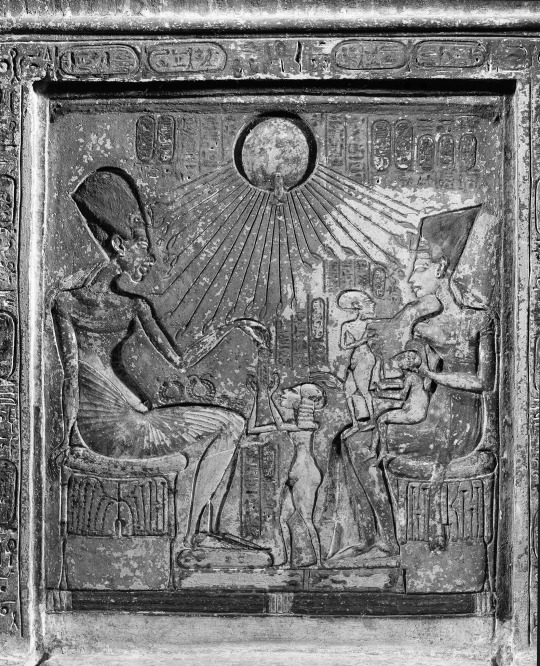
i encourage you to look into the aspects of nefertiti along with the sign, degree, and house placement. for the more advanced astrologers, take a look at the persona chart of nefertiti AND/OR add the other characters involved to see how they support or impede nefertiti!
OTHER RELATED ASTEROIDS: akhenaten (326290) and aten (2062)!
like what you read? leave a tip and state what post it is for! please use my “suggest a post topic” button if you want to see a specific post or mythical asteroid next!
click here for the masterlist
click here for more egyptian myths & legends
want a personal reading? click here to check out my reading options and prices!
#astrology#asteroid#asteroid astrology#astro chart#astro community#persona chart#natal chart#astro placements#queen of egypt#queen of queens#nefertiti#egyptian mythology#asteroid3199
69 notes
·
View notes
Text


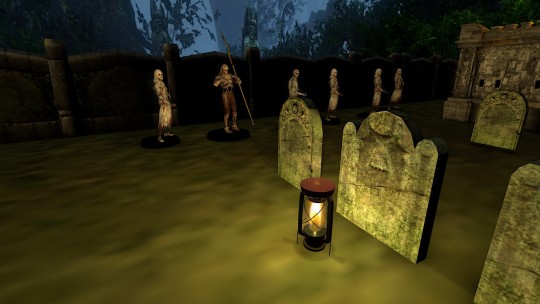



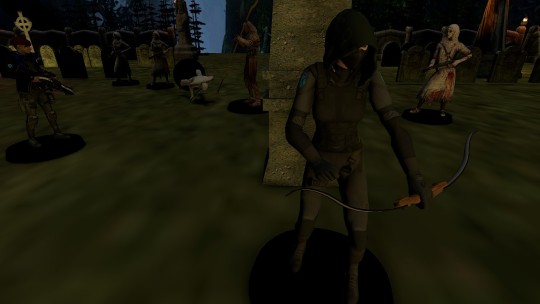
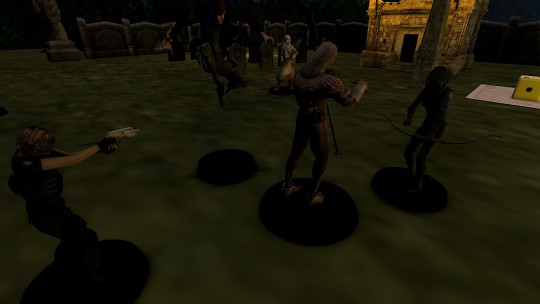


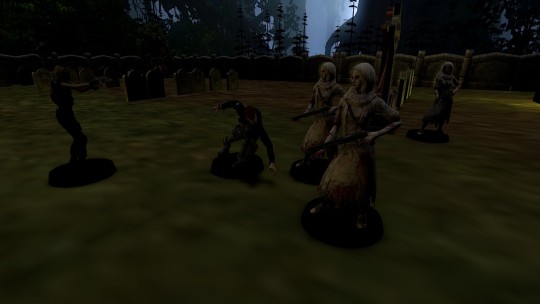




And so starts the Tomb of The Serpent campaign. For the first act I'm playing it by the book, without any change in the rules. In the original story the leagues receive dreams from an egyptian god warning of the rise of an evil serpent god, and they have to travel the world in search of specific artifacts to fight the avatar of Apophis before traveling to Egypt.
Of course I'm gonna weld this campaign into the Lighthouse Canon and make things weirder. I changed the villain to the ancient pharaoh Akhenaten, or better yet his version from The Secret World, where his cult of Aten was secretly dedicated to lovecraftian horrors called Dreamers.
Xcom discovered this through a series of ominous messages from their psychic network, alongside intelligence reports pointing to EXALT involvement in this. Seeing the threat of Dreamers, whose filth they fought before in earlier games, they sent agents to intervene.
I started with the mission "Evil Below", where the league seeks the egyptian artifact in a british graveyard (there's colonialism involved), fighting cultists along the way. The mission gimmick is that the main objective is inside an angel statue that happens to be a Doctor Who reference, exchanging places with other objective markers around the graveyard each turn (plus horror effects).
Fortunately the Lethe squad managed to enter the graveyard, get the artifact and defeat all cultists with a single wounded agent in the process.
0 notes